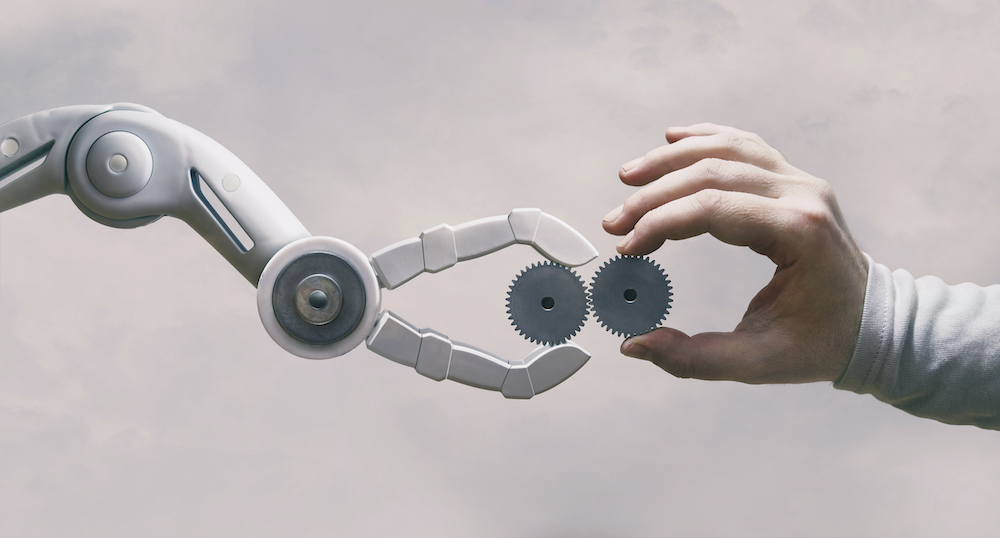The landscape of work is continuously evolving, and technology is at the forefront of this transformation. In today’s world, robots are no longer just machinery confined to assembly lines; they are becoming integral partners in various industries. The complexity of human-robot interaction (HRI) presents both a challenge and an opportunity for organizations aiming to leverage robotic capabilities. Recent discussions featuring industry pioneers like Clara Vu of Veo Robotics and Rod Brooks of Robust.ai shed light on the strides being made and the future of this harmonious coexistence.
Shifting from Automation to Autonomy
As technology advances, so too does our understanding of how robotic systems can interact with humans. Clara Vu emphasizes that we are no longer limited to automation—where robots merely follow commands—but are entering an era of autonomy. This transition allows robots to better understand their environments and make independent decisions based on a richer sensory data set. The sensors and processors that enable these capabilities are a significant leap from what was available just a few years ago, signaling an exciting shift in robotic performance.
- Complex Environments: Robots are now being equipped to operate in more dynamic and unpredictable settings, which increases their utility across various domains.
- Increased Autonomy: With enhanced autonomy, robots can recognize and interpret common human behaviors, allowing for smoother interactions in diverse environments.
The Warehousing Revolution
The warehousing sector is often viewed as a golden opportunity for robotic integration, yet according to Brooks, a staggering 80% of U.S. warehouses remain unautomated. Robust.ai is pioneering efforts to embed intelligent robots in these spaces without requiring extensive programming knowledge from workers who may be unfamiliar with automation technology. This development marks a significant cultural shift, making it easier for employees to embrace robotic colleagues.
- No-Code Solutions: By providing no-code tools, Robust.ai enables teams to focus on efficiency rather than on coding, thereby fostering a more approachable entry point for automation.
- Computational Advances: The shift away from Moore’s Law has unleashed a wave of innovation in computer architecture, allowing developers to explore creative solutions in automated environments.
Coping with Complexity
As robots are tasked with navigating more complex and unstructured environments, the challenges they face grow exponentially. Vu rightly points out that simple tasks conducted in controlled settings can become incredibly complicated once placed in chaotic or varied surroundings. This evokes the idea that while robots are getting smarter, the landscape they operate in is evolving rapidly, introducing new variables and challenges to robot intelligence.
Reflecting on the Past to Craft the Future
Both Vu and Brooks acknowledge the legacy of past initiatives, particularly citing Rethink Robotics as a pivotal player that inspired fresh perspectives on collaborative robotics. This venture may not have achieved commercial success, but its explorations raised expectations of what robots can accomplish in tandem with human workers. Clear lessons have emerged from these experiences, shaping the current trajectory of robotic development.
- Evolving the Cobot Concept: As cobots (collaborative robots) gain traction in various industries, innovators like Veo aim to extend these principles to larger, more powerful robotic systems through advanced technologies like computer vision.
- Expanding the Ecosystem: Expanding the definitions and roles of robots within workspaces could lead to more innovative applications outside traditional confines.
Conclusion: Preparing for a Hybrid Future
The future of work lies in the seamless integration of human and robotic interactions. As enterprises adapt to this new reality, appreciating the complexity and potential of HRI will be critical. By leveraging advancements in technology and insights from pioneering leaders in the field, organizations can not only improve efficiency but can also foster a workplace environment that embraces collaboration between humans and machines.
At fxis.ai, we believe that such advancements are crucial for the future of AI, as they enable more comprehensive and effective solutions. Our team is continually exploring new methodologies to push the envelope in artificial intelligence, ensuring that our clients benefit from the latest technological innovations. For more insights, updates, or to collaborate on AI development projects, stay connected with fxis.ai.

